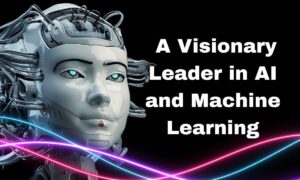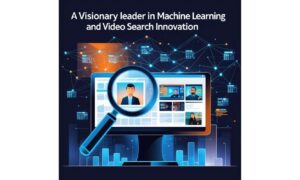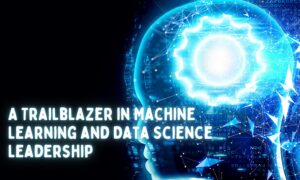In today’s rapidly evolving technological landscape, the integration of mechatronics, IoT, edge computing, and AI/ML presents boundless opportunities for innovation and advancement. However, navigating this convergence requires addressing critical gaps and challenges to unlock its full potential. In this article, we delve into the uncharted territory of integrating these diverse domains, exploring key areas of focus, emerging trends, and strategies to bridge existing gaps. Join us on a journey to discover how these interconnected technologies are reshaping industries and driving transformative change.
Roopak Ingole: A Distinguished Career in Embedded Systems and Control Software Innovation
Roopak Ingole an expert in the field, secured numerous professional achievements, progressing from an Apprentice Engineer at KPIT Cummins Infosystems Ltd in 2002 to Engineering Manager of Advanced Embedded Software at Cummins Inc. in 2017. Over six years at KPIT, he advanced from Apprentice Engineer to Software Engineer and Senior Software Engineer. Following this, he joined Motorola Solutions Inc. in Schaumburg, IL, as a Senior Software Engineer, where he spent six years growing to Senior Staff Software Engineer. At Motorola, he supported the development of multiple systems-level features for MotoTRBO commercial radios and architected base embedded platform for the next generation of base-station radios. After launching Mototrbo’s base-station in 2015, he joined Cummins Inc. as a Technical Advisor, leading various research projects and designing electronic systems and embedded software for powertrain solutions. He also architected an embedded solution for a predictive analytics algorithm, significantly reducing warranty costs.
Currently, as the Engineering Manager – Advanced Embedded Software (R&D) at Cummins Inc., he led the development and delivery of electronic control software for diverse research programs. His role involves shaping technology, guiding investments, and identifying new business opportunities. He established and manages a 15-member Advanced Embedded Software team, delivering innovative rapid software solutions for engines, after-treatment systems, and electric/hybrid powertrains. His strategic insights have reduced warranty costs by 15% and enhanced software development efficiency through the adoption of Agile methodologies.
His contributions within the realm of embedded control software and electronic systems have been instrumental in driving impactful projects across various organizations.
At Cummins Inc. in the USA, Ingole spearheaded the establishment of a model-based development process for embedded control software using Matlab/Simulink, resulting in the deployment of floating-point code on ECUs for improved accuracy and productivity. Additionally, he spearheaded the development of field performance analytics solutions, embedding analytics algorithms in ECUs to reduce data transmission costs by 80% and facilitate predictive analytics and preventive maintenance.
During his tenure at Motorola Solutions Inc. in the USA and Penang, Malaysia, he played pivotal roles in projects such as enhancing GPS accuracy for MotoTRBO radios and developing a wide area trunking system, leveraging Agile methodologies to increase reliability and customer satisfaction. Furthermore, as an Infrastructure Platform Architect for the Next Generation MotoTRBO Base-station Radio, he defined strategy, scope, and architecture while leading a global software team to deliver a versatile product platform.
In addition to these achievements, Roopak led groundbreaking initiatives at Cummins Inc., including the development of methodologies such as MARCI; Modeling Architecture for Component Integration; modeling and AutoSAR adoption for automotive-embedded software transformation. His innovations in digital products, leveraging advanced data science methods and machine learning techniques, have significantly improved fault isolation, clutch engagement prediction, and fuel contamination detection, ultimately reducing warranty costs and enhancing truck performance.
Moreover, his involvement in projects funded by the U.S. Department of Energy focused on autonomous driving technology and platooning, demonstrated significant fuel economy benefits. These accomplishments, combined with his leadership in mechatronics/electronics systems for research programs, underscore his dedication to fostering innovation and realizing concrete outcomes in the realm of embedded systems and control software.
Pioneering Projects in Embedded Systems and Control Software
Among his most impactful projects in embedded systems and control software, Roopak has demonstrated exceptional expertise and innovation. One significant achievement was the Field Performance Analytics project, where he embedded analytics algorithms directly into Engine Control Units (ECUs). This approach drastically reduced data transfer over the internet and associated costs. In another initiative, he spearheaded the development of digital products designed to detect fuel contamination and identify gas stations supplying contaminated fuel, effectively lowering warranty costs associated with after-treatment systems due to high sulfur content. Roopak also led the creation of advanced fault isolation and analysis tools for diesel engines, utilizing sophisticated data science methods and machine learning techniques. These tools enabled technicians to swiftly isolate faulty components and resolve issues, thereby minimizing truck downtime. Additionally, he developed embedded models through machine learning to detect and predict clutch engagement in manual transmission trucks, which significantly improved clutch lifespan, reduced replacement costs, and decreased truck downtime.
Overcoming Challenges and Embracing Machine Learning in Control Systems
One significant challenge they encountered was the integration of machine learning expertise within their team of control system engineers. While data accessibility wasn’t an issue, his team lacked proficiency in data analytics and machine learning techniques. To overcome this hurdle, he invested in professional training and engaged in extensive self-learning initiatives. This strategic approach not only bridged the skill gap but also empowered them to develop highly accurate models tailored to their specific needs.
In the realm of technological advancements, machine learning (ML) stands out as a transformative force, particularly in domains like mechatronics, diesel engines, automotive, and the Internet of Things (IoT). His published works delve into the critical role of machine learning in these fields, exploring its applications, benefits, and future trajectory.
Machine Learning Applications in Mechatronics, Automotive, and IoT
Roopak Ingole also shared some insights about machine learning finding extensive application in mechatronics, where it optimizes complex systems, improves precision, and enables adaptive control mechanisms. Predictive maintenance is a significant area, where ML algorithms analyze sensor data to predict equipment failures, reducing downtime and maintenance costs. In robotics, ML enhances the capabilities of autonomous systems, enabling them to learn from the environment and perform complex tasks with high accuracy. Quality control benefits from ML as well, with models detecting defects in manufacturing processes, improving product quality, and reducing waste.
According to him, in the automotive industry, particularly with diesel engines, machine learning has brought significant improvements. ML algorithms optimize engine parameters to reduce emissions, enhance performance under various conditions, and diagnose faults early, preventing major failures and reducing repair costs. Machine learning also plays a pivotal role in harnessing the vast data generated by IoT devices. ML algorithms process and analyze this data to understand user behaviors, predict trends, and enhance security. Smart city applications benefit from ML-driven IoT systems, optimizing urban operations and improving residents’ quality of life.
These insights highlight the transformative potential of machine learning across various domains, paving the way for innovative solutions and enhanced efficiency in diverse industries.



































